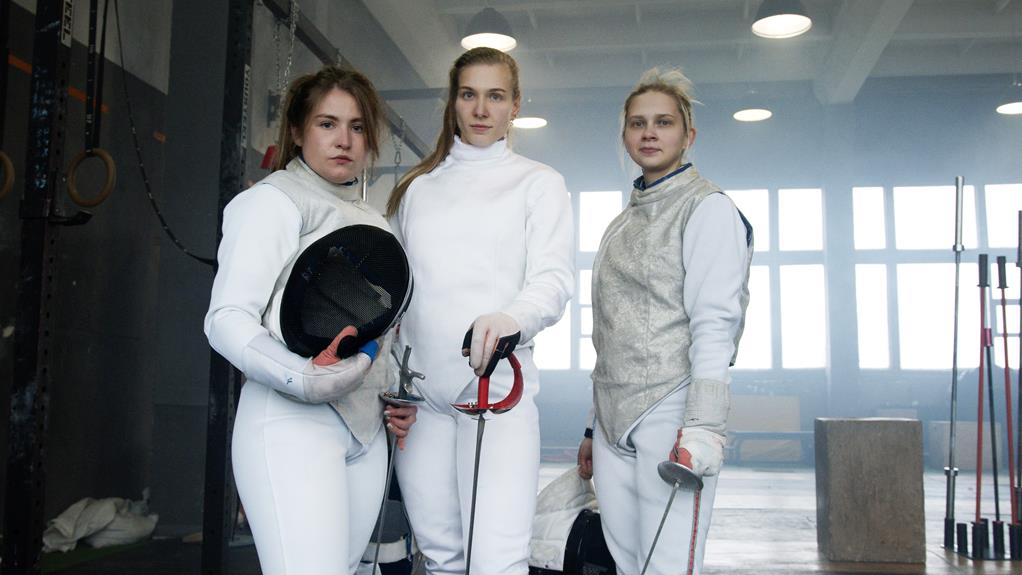Welcome to our comprehensive guide on the rules of ONE Championship, a premier mixed martial arts organization.
Did you know that ONE Championship follows a set of rules designed to ensure fair and competitive fights?
In this article, we will delve into the specific rules governing MMA, Muay Thai, Kickboxing, and Submission Grappling in ONE Championship.
Get ready to master the intricacies of each combat sport as we explore the rules, penalties, equipment requirements, and more.
Let's dive in and become experts in the world of ONE Championship rules.
Key Takeaways
- ONE Championship MMA rules include the addition of 12 to 6 elbows and knee strikes to the head of a grounded opponent.
- ONE Championship Muay Thai and Kickboxing rules have non-title fights consisting of 3 rounds of 3 minutes with 1-minute breaks, while title fights have 5 rounds of 3 minutes with 1-minute breaks.
- ONE Championship Submission Grappling rules require grapplers to engage at all times and pulling guard is only allowed for offensive purposes.
- ONE Championship has strict rules against fouls such as biting, eye gouging, headbutting, and striking the back of the head, among others.
MMA Rules
The MMA rules in ONE Championship are based on the Global Mixed Martial Arts Rule Set, with a few key differences from the UFC rules.
One notable difference is the allowance of knee strikes to the head of a grounded opponent in ONE Championship. While this technique is prohibited in the UFC, it adds an extra dimension of strategy and excitement to the fights in ONE Championship.
The impact of knee strikes to the head of a grounded opponent can be devastating, as the grounded fighter is in a vulnerable position and unable to defend themselves effectively. This rule change challenges fighters to be more aware of their positioning and opens up new opportunities for striking and finishing the fight.
It adds an element of unpredictability and excitement for both the fighters and the audience.
Muay Thai Rules
Muay Thai Rules in ONE Championship adhere to the Global Muay Thai Rule Set, incorporating specific regulations for this combat sport. Here are three key aspects of Muay Thai rules in ONE Championship:
1) Muay Thai Clinch Techniques: The clinch is a crucial aspect of Muay Thai, and it is no different in ONE Championship. Fighters are allowed to engage in the clinch, where they can use knee strikes, elbows, and sweeps to gain an advantage over their opponents. The clinch is a strategic and technical aspect of Muay Thai that requires skill and control.
2) Muay Thai Scoring System: In ONE Championship, Muay Thai fights are scored based on the effectiveness of strikes, aggression, ring control, and defense. Judges take into account the number of clean strikes landed, the power behind those strikes, and the overall dominance displayed by the fighters. The scoring system encourages fighters to showcase their skills while maintaining a balanced approach to offense and defense.
3) 4 oz Gloves: Unlike traditional Muay Thai competitions that use 8 oz gloves, ONE Championship fighters wear 4 oz gloves. This smaller glove size allows for more precise strikes and enhances the impact of each blow. It adds an extra level of excitement and intensity to the fights, making them even more thrilling for the audience.
Kickboxing Rules
ONE Championship Kickboxing competitions adhere to a set of rules that govern the sport and ensure fair play and safety for all fighters involved.
In a kickboxing match, fighters utilize a range of striking techniques, including punches, kicks, and knee strikes, to score points and potentially knock out their opponents.
The scoring in kickboxing matches is based on the effectiveness of these techniques. Judges award points for clean, powerful strikes that land on the opponent's head or body. Knockdowns and knockouts also carry significant weight in the scoring process.
The fighter with the higher score at the end of the designated rounds is declared the winner.
These rules and scoring criteria ensure that ONE Championship kickboxing matches are dynamic, exciting, and ultimately determine the most skilled fighters in the sport.
Submission Grappling Rules
Now let's delve into the rules of submission grappling in ONE Championship, where fighters showcase their expertise in ground fighting techniques.
Submission grappling is a dynamic and strategic combat sport that emphasizes grappling techniques and the application of submission holds to force an opponent to tap out.
Here are three key aspects of the submission grappling rules in ONE Championship:
- Engage at all times: Grapplers are expected to actively engage with their opponent throughout the match. Stalling or avoiding contact is discouraged, and fighters must continuously pursue advantageous positions and submission opportunities.
- Offensive use of guard: Pulling guard, where a fighter willingly goes to the ground and assumes a defensive position, is only allowed for offensive purposes. This means that fighters cannot use the guard solely to avoid their opponent's attacks but must actively work towards securing submissions.
- Referee warnings and yellow cards: Referees have the authority to issue warnings or yellow cards to fighters who fail to engage or display passive behavior. These penalties serve as a reminder for fighters to maintain an active and aggressive approach during the match.
Yellow Cards and Penalties
Yellow card penalties are an integral part of enforcing the rules and maintaining discipline in ONE Championship combat sports. These penalties can have a significant impact on the outcome of a fight.
When a fighter receives a yellow card, they are given an official warning for stalling or disregarding the rules. If a fighter accumulates multiple yellow cards, they may face further penalties, such as a deduction of points or even disqualification.
The decision to award yellow cards is made by the referee, who must carefully consider the actions of the fighters and ensure fair play. However, there have been some controversial yellow card decisions in ONE Championship history, with fans and experts questioning the consistency and fairness of these judgments.
These instances further highlight the importance of maintaining transparency and consistency in the enforcement of yellow card penalties.
Red Cards and Disqualifications
The enforcement of red cards and disqualifications is an important aspect of maintaining the integrity and safety of ONE Championship combat sports. Here are some discussion ideas about red cards and disqualifications in ONE Championship:
- Impact of red cards on athlete's pay/purse: When a fighter receives a red card and is disqualified, ONE Championship deducts a minimum of 30% to a maximum of 100% of the athlete's pay/purse. This serves as a significant financial consequence for the disqualified fighter and emphasizes the importance of adhering to the rules.
- Controversial red card decisions in ONE Championship: Throughout its history, ONE Championship has witnessed some controversial red card decisions. For example, Eddie Alvarez was famously disqualified via a red card for continuous strikes to the back of the head. Shinechagtaga Zoltsetseg also received a red card for kicking a grounded opponent in the face. These decisions sparked debates among fans and experts, highlighting the subjective nature of red card enforcement.
- Ensuring fairness and safety: Red cards and disqualifications play a crucial role in ensuring fairness and safety in ONE Championship. By penalizing fighters for severe, repetitive, or deliberate fouls, the organization sends a clear message that unsportsmanlike conduct will not be tolerated. This not only protects the integrity of the sport but also safeguards the well-being of the athletes involved.
Fighter Injuries and Recovery
Continuing the focus on maintaining fairness and safety in ONE Championship combat sports, the organization places great importance on the timely recovery and appropriate handling of fighter injuries. Fighter rehabilitation is a top priority, ensuring that athletes receive the necessary medical attention and support to recover from injuries sustained during competition. To further ensure the well-being of the fighters, ONE Championship also implements medical suspensions when necessary. These suspensions are imposed to allow fighters sufficient time to recover fully before returning to the cage or ring. By prioritizing fighter rehabilitation and implementing medical suspensions, ONE Championship demonstrates its commitment to the physical and mental well-being of its athletes. This approach not only promotes fairness but also supports the long-term health and career longevity of the fighters.
| Fighter Rehabilitation | Medical Suspensions |
|---|---|
| Timely recovery and appropriate handling of injuries | Implemented to allow fighters ample time to fully recover |
| Ensuring athletes receive necessary medical attention and support | Promotes fairness and long-term health |
| Demonstrates commitment to fighter well-being | Supports career longevity |
Prohibited Techniques and Strikes
Moving on to the topic of prohibited techniques and strikes in ONE Championship combat sports, it is important to understand the specific actions that are strictly forbidden in the ring or cage. Here are three key points to consider:
- Controversial strikes in ONE Championship:
- Strikes to the back of the head, neck, or spine are banned, as they can cause severe damage to the opponent and potentially lead to life-threatening injuries.
- Kicking the head of a downed opponent and stomping a grounded opponent's head are also prohibited, as they pose a significant risk to fighter safety.
- Impact of prohibited techniques on fighter safety:
- The rules against these techniques are in place to prioritize the safety and well-being of the fighters. By prohibiting strikes to vulnerable areas, ONE Championship aims to minimize the risk of serious injuries.
- These rules ensure that fighters can compete in a controlled environment where their safety is paramount, allowing them to showcase their skills without unnecessary harm.
Equipment and Attire Requirements
To ensure a safe and fair competition, ONE Championship enforces specific equipment and attire requirements for all combat sports. These requirements are designed to prioritize fighter safety and give referees the authority to maintain a level playing field. Here is a breakdown of the equipment and attire requirements for ONE Championship:
| Equipment/Attire | Description |
|---|---|
| Gloves | Fighters are provided with gloves by ONE Championship. The size of the gloves varies depending on the weight class and combat sport. |
| Mouthguard | All fighters are required to wear a mouthguard to protect their teeth and jaw during the fight. |
| Groinguards | Groinguards are optional for female athletes, but highly recommended for added protection. |
| Shorts | Fighters must wear shorts that do not have exposed pockets or strings. Acceptable options include MMA trunks, Spandex/Lycra shorts, and board shorts. |
| Hand Wraps | Only approved tape and gauze can be used for hand wraps. Gauze can cover the hand and wrist, extending over the knuckles, while tape can be applied to the hand and wrist, but not beyond the knuckles. The hand wraps must be applied by the ONE Championship cutman. |
| Vaseline | The appointed ONE Championship cutman applies Vaseline to the facial area above and around the eyes to minimize cuts and abrasions. |
These equipment and attire requirements ensure that fighters are properly protected during their matches, reducing the risk of injuries. Referees have the authority to ensure that all fighters adhere to these requirements before and during the fights, further enhancing fighter safety and maintaining the integrity of the competition.
Frequently Asked Questions
Are Fighters Allowed to Wear Protective Gear Other Than Mouthguards and Groinguards?
Fighters in ONE Championship are allowed to wear protective gear other than mouthguards and groinguards. However, the use of additional protective equipment, such as strapping of joints and neoprene supports, is not permitted for fighter safety and to ensure fair competition.
What Happens if a Fighter Receives Multiple Yellow Cards in a Match?
If a fighter receives multiple yellow cards in a ONE Championship match, they may face consequences and disciplinary actions. These can range from deductions in pay to disqualification, depending on the severity of the infractions committed.
Can Fighters Appeal a Red Card Decision?
Fighters cannot appeal a red card decision in ONE Championship. Consequences for receiving multiple yellow cards include deductions from the athlete's pay. Red cards are given for severe, repetitive, or deliberate fouls.
How Are Judges' Decisions Determined in ONE Championship?
Judges' decisions in ONE Championship are determined based on the overall criteria of effective striking, grappling, and cage control. These factors are carefully assessed to determine the winner of each bout.
Are Fighters Allowed to Use Any Type of Takedown or Grappling Technique in Submission Grappling?
In submission grappling, fighters are allowed to use various types of takedowns and grappling techniques to gain control and submit their opponents. This sets submission grappling apart from other combat sports, showcasing the intricacies of ground-based techniques and strategies.
Conclusion
In conclusion, ONE Championship has established comprehensive rules for each combat sport, ensuring fair and competitive fights.
From MMA to Muay Thai, Kickboxing, and Submission Grappling, each discipline has its own specific set of regulations.
The use of yellow and red cards, penalties for rule violations, and equipment requirements are also enforced to maintain the integrity of the sport.
ONE Championship continues to be a prominent organization that upholds the highest standards of combat sports.
- 15 Best Martial Arts Weapons (Fighting & Training) - October 14, 2024
- Is Fencing a Martial Art? (Yes, 4 Reasons Why) - October 14, 2024
- 7 Best Martial Arts for Self-defense Ranked (Highly Effective) - October 14, 2024










